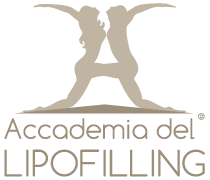Ulcers represent the heaviest social and economic burden among diabetes complications, being the reason of long follow-up in outpatient services, increased hospitalizations as well as drastic QOI lowering for patients affected. The lifetime risk for a diabetic patient to develop an ulcer is 25%, and the lesion will lead to major or minor amputation in at least 14 % of patients affected. In diabetic artheriopathic patients, the entity of skin ulcers may compromise limb healing and salvage despite the success of revascularization. For this reason, a prompt lesion resolution after revascularization represents a critic end-point in the multidisciplinary healing program faced up by these patients. Medications available maintain an ideal “macro-environment” to help wound healing, but they do not significantly modify its natural course.
We report here our experience with the use of two homologous, “waste” tissues rich in MSCs along with standard of care to enhance the healing of diabetic inferior limb ulcers in artheriopathic patients. MSCs are known for their therapeutic potential in impaired healing processes thanks to the production of immunomodulators, proangiogenic, chemotactic factors that justify the increasing interest of different medical branches toward these progenitor cells. We present a series of 17 particularly severe cases of chronic arterial inferior limb ulcers (all classifiable stage 2 and 3 according to Texas Wound Classification), that we took in charge after revascularization and we treated with cryopreserved amniotic membrane (n=9) or enriched (n=2)/not enriched (n=5) fat grafting along with basic principles of wound care. All ulcers underwent surgical débridement using an ultrasound system (SonicOne®)
Adipose tissue was harvested and collected through a closed system exploiting Water Assisted Liposuction (Body-Jet® system with LipoCollector® tool). For the 5 patients that presented a minimal tendon or bone exposure (inferior to 10% of wound’s area), the product obtained was injected at one cm deep in ulcer edges and bed. The quantity of lipoaspirate injected varied from 10 to 30 ml. For two among the 11 patients that presented a major tendon or bone exposure, washed fat was processed by The Celution®System then the product (more or less 5 ml) was then resuspended in 20-30 ml of adipose tissue to create the enriched fat. For the 9 remaining patients, after the debridement, we positioned on the bottom of the ulcer a cryopreserved amniotic membrane and we sutured in place like a skin graft.
After two weeks 16 over 14 lesions showed valid granulation tissue and we covered it by a split thickness skin graft harvested from thigh or gluteus. In two cases, the skin graft was unnecessary because of the ulcers were almost completely healed at two weeks.
Among the 200 artheriopathic patients affected by chronic deep ulcer that underwent a lower limb revascularization between January 2012 and August 2013 at our hospital, only diabetic patients were asked to receive either amniotic membrane or fat grafting as complementary treatment. 17 patients accepted. Data concerning wound healing and healing time, patency of revascularization, number of amputations were recorded. 16 patients over 17 reached ulcer healing along with a pervious revascularization in 9 cases; the lesion did not relapse in the 7 patients that incurred in a vascular re-occlusion. The result was stable at the end of follow-up (15 months). Average healing time for the 16 patients was 26,3 days after the last operation.
In our experience, both amniotic membrane and fat grafting confirmed to be viable tools to enhance wound healing in patients suffering by chronic diabetic ulcer grade 2-3 according to TWC, along with a proper wound bed preparation and usual plastic surgery techniques. Being carriers of progenitor cells, cytochines, trphic and immunomodulator factors and still preserving their tissue-specific structure, these homologous, non-immunogenic, “waste” tissues are easy to administrate, requiring minimal surgical skills, and adaptable to wound and patient features.
Prof. Pier Camillo Parodi; Dr. Nicola Zingaretti.
